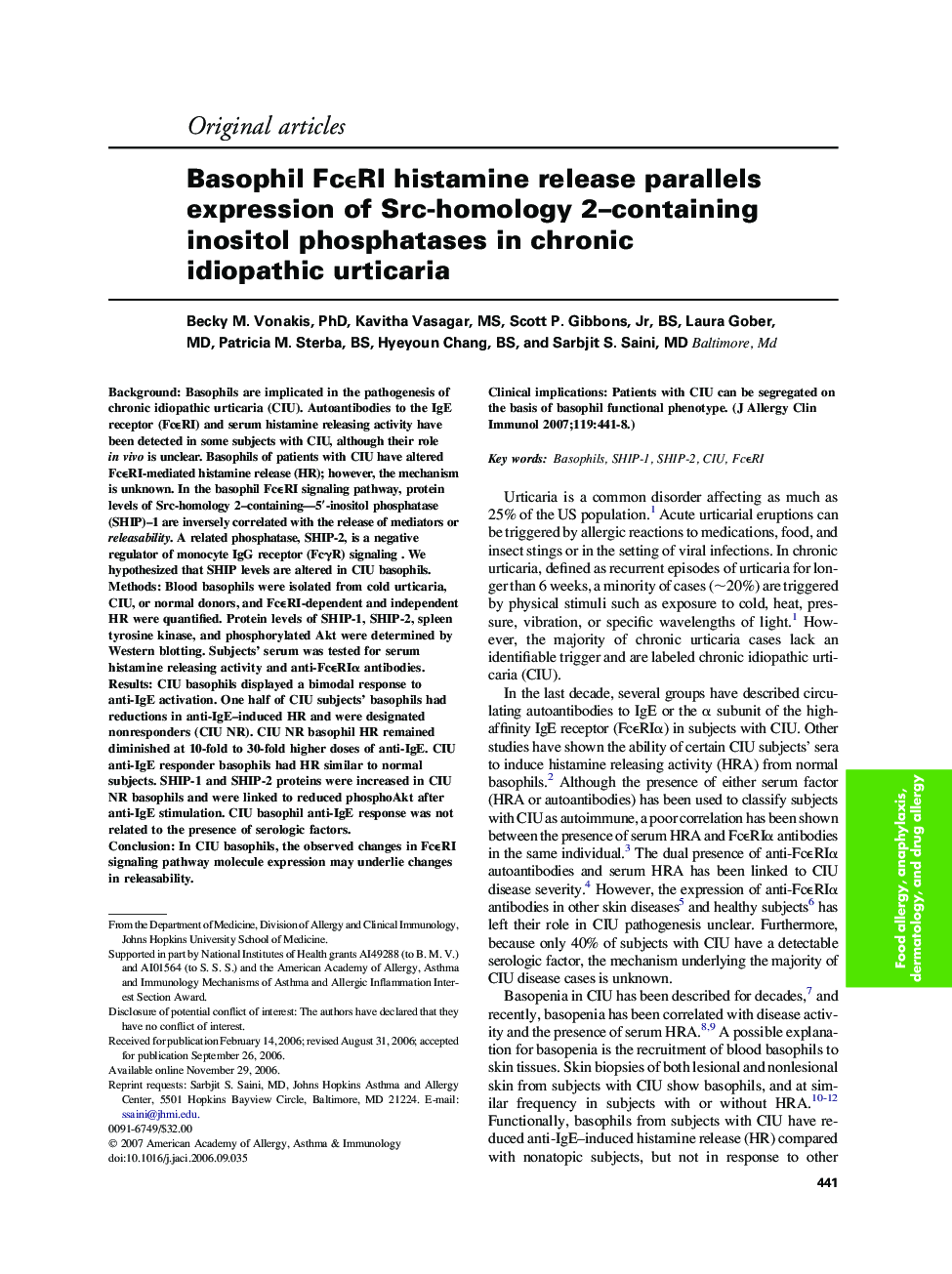| کد مقاله | کد نشریه | سال انتشار | مقاله انگلیسی | نسخه تمام متن |
|---|---|---|---|---|
| 3202155 | 1201967 | 2007 | 8 صفحه PDF | دانلود رایگان |

BackgroundBasophils are implicated in the pathogenesis of chronic idiopathic urticaria (CIU). Autoantibodies to the IgE receptor (FcɛRI) and serum histamine releasing activity have been detected in some subjects with CIU, although their role in vivo is unclear. Basophils of patients with CIU have altered FcɛRI-mediated histamine release (HR); however, the mechanism is unknown. In the basophil FcɛRI signaling pathway, protein levels of Src-homology 2–containing—5′-inositol phosphatase (SHIP)–1 are inversely correlated with the release of mediators or releasability. A related phosphatase, SHIP-2, is a negative regulator of monocyte IgG receptor (FcγR) signaling . We hypothesized that SHIP levels are altered in CIU basophils.MethodsBlood basophils were isolated from cold urticaria, CIU, or normal donors, and FcɛRI-dependent and independent HR were quantified. Protein levels of SHIP-1, SHIP-2, spleen tyrosine kinase, and phosphorylated Akt were determined by Western blotting. Subjects' serum was tested for serum histamine releasing activity and anti-FcɛRIα antibodies.ResultsCIU basophils displayed a bimodal response to anti-IgE activation. One half of CIU subjects' basophils had reductions in anti-IgE–induced HR and were designated nonresponders (CIU NR). CIU NR basophil HR remained diminished at 10-fold to 30-fold higher doses of anti-IgE. CIU anti-IgE responder basophils had HR similar to normal subjects. SHIP-1 and SHIP-2 proteins were increased in CIU NR basophils and were linked to reduced phosphoAkt after anti-IgE stimulation. CIU basophil anti-IgE response was not related to the presence of serologic factors.ConclusionIn CIU basophils, the observed changes in FcɛRI signaling pathway molecule expression may underlie changes in releasability.Clinical implicationsPatients with CIU can be segregated on the basis of basophil functional phenotype.
Journal: Journal of Allergy and Clinical Immunology - Volume 119, Issue 2, February 2007, Pages 441–448